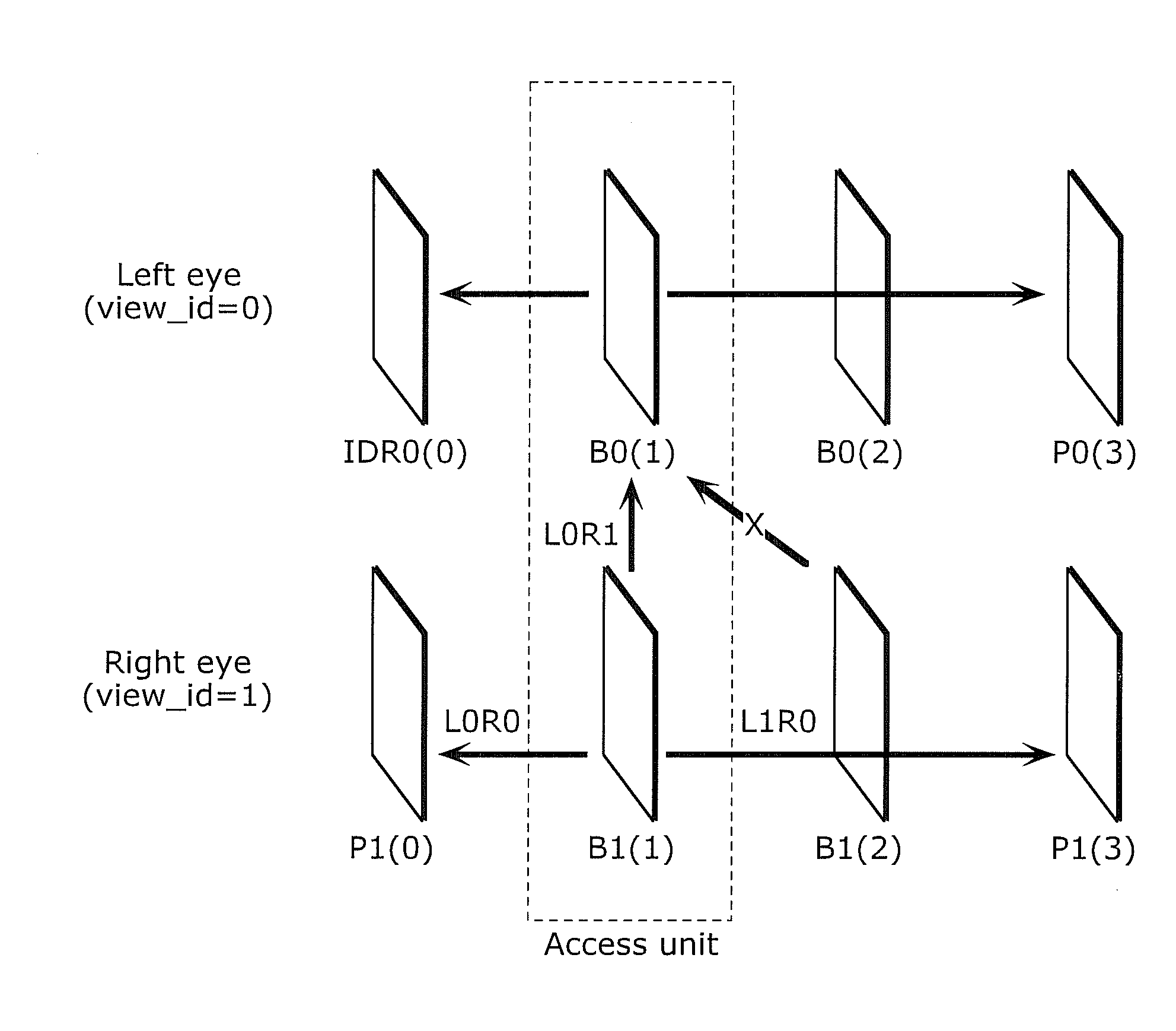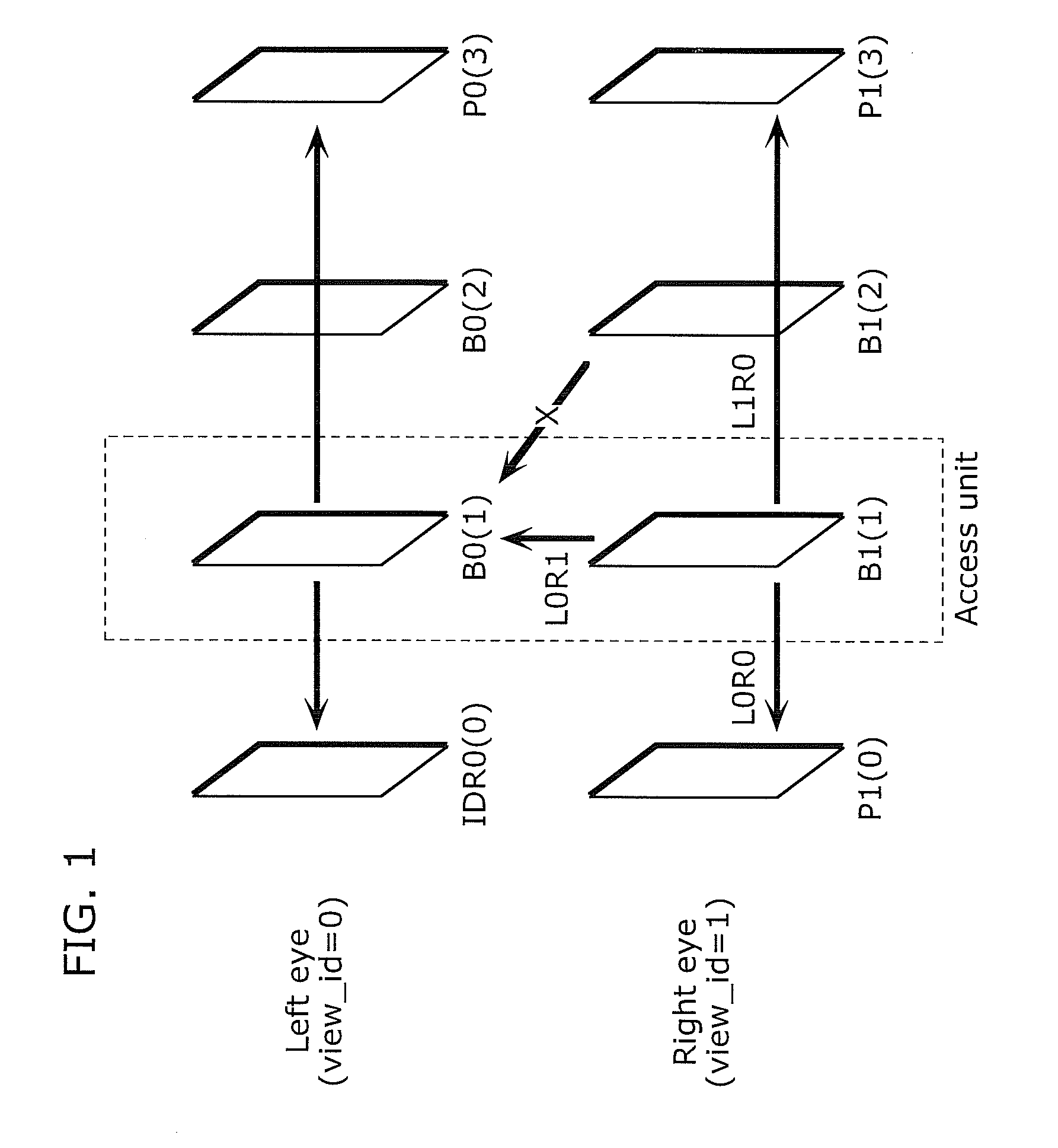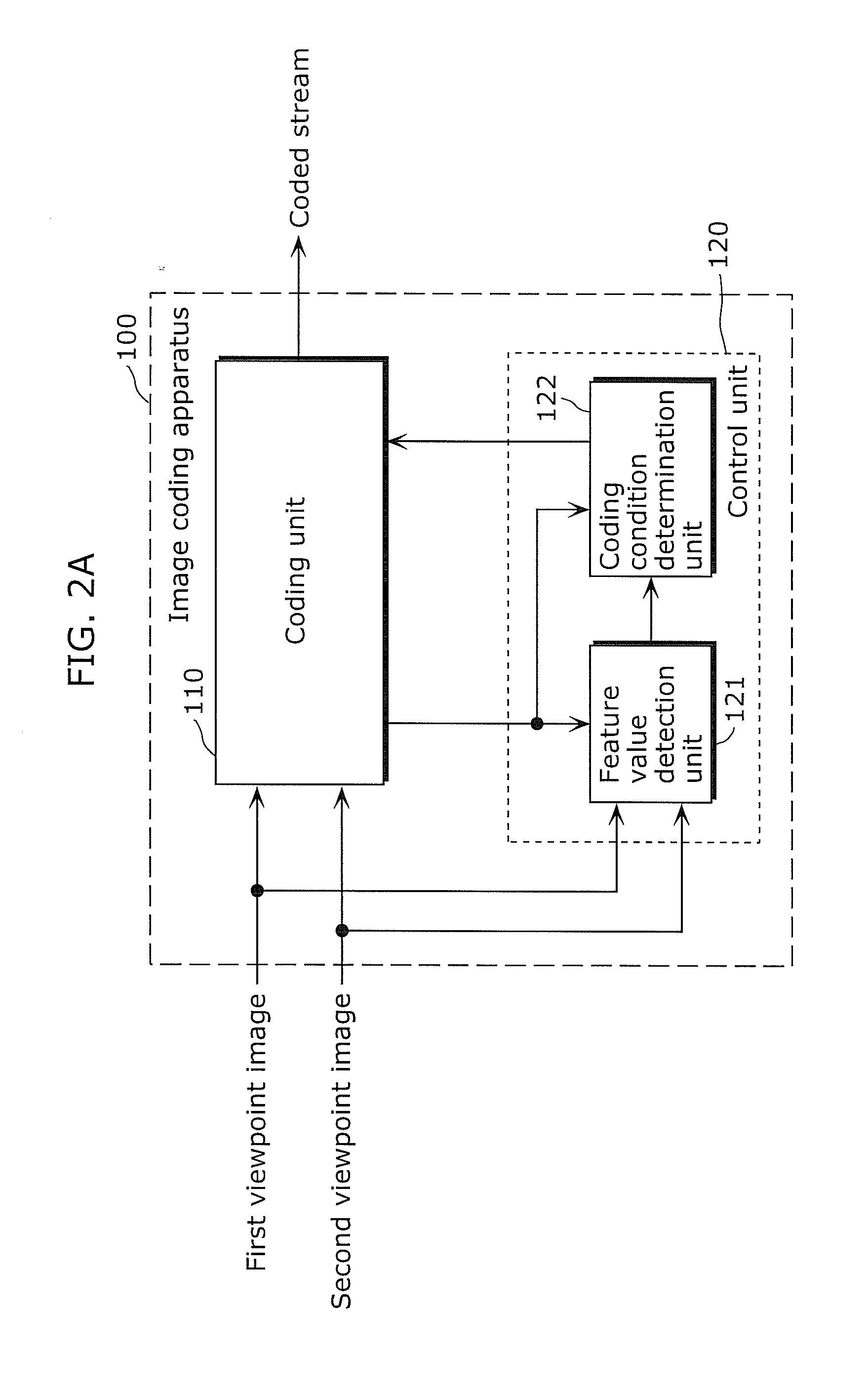Image coding apparatus, image coding method, program, and integrated circuit
a technology of image coding and coding apparatus, applied in the field of image coding apparatus and image coding method, can solve the problems of difficult to perform display while seamlessly switching between 3d video and 2d video, and above conventional techniques
- Summary
- Abstract
- Description
- Claims
- Application Information
AI Technical Summary
Benefits of technology
Problems solved by technology
Method used
Image
Examples
embodiment 1
[0066]An image coding apparatus according to Embodiment 1 is an image coding apparatus that codes stereoscopic video. The image coding apparatus according to Embodiment 1 includes: a control unit that sets a coding mode to one of a 2D coding mode and a 3D coding mode, the 2D coding mode being a mode of coding the stereoscopic video so that, when the coded stereoscopic video is decoded and displayed in 3D, the stereoscopic video is displayed as 2D video, and the 3D coding mode being a mode of coding the stereoscopic video so that, when the coded stereoscopic video is decoded and displayed in 3D, the stereoscopic video is displayed as 3D video; and a coding unit that, in the case where the control unit switches the coding mode from the 3D coding mode to the 2D coding mode, codes the stereoscopic video according to a 3D coding standard when the coding mode is the 3D coding mode, and codes the stereoscopic video according to the 3D coding standard using a coding condition when the codin...
embodiment 2
[0119]Embodiment 2 describes another coding condition (coding parameter) for making the coded images identical to each other, using the structure described in Embodiment 1. The same premise as in Embodiment 1 also applies to Embodiment 2. The following describes a coding condition determination process in the case of determining to code the first viewpoint image and the second viewpoint image as a 2D image. Since other operations are the same as those in Embodiment 1, their description is omitted.
[0120]When setting the coding mode to the 2D coding mode, i.e. when determining to code the first viewpoint image and the second viewpoint image as a 2D image, the image coding apparatus according to Embodiment 2 sets the coding type of all macroblocks included in the second viewpoint image to a skip macroblock in the case where the picture type of the second viewpoint image is a P picture. In the case where the picture type of the second viewpoint image is a B picture, on the other hand, t...
embodiment 3
[0136]Embodiment 3 describes another coding condition (coding parameter) for making the coded images identical to each other, using the structure described in Embodiment 1. The same premise as in Embodiment 1 also applies to Embodiment 3. The following describes a coding condition determination process in the case of determining to code the first viewpoint image and the second viewpoint image as a 2D image. Since other operations are the same as those in Embodiment 1, their description is omitted.
[0137]When setting the coding mode to the 2D coding mode, i.e. when determining to code the first viewpoint image and the second viewpoint image as a 2D image, the image coding apparatus according to Embodiment 3 sets the first viewpoint image not only in the reference index 0 in the first reference list but also in the reference index 0 in the second reference list and sets the coding type of all macroblocks included in the second viewpoint image to a skip macroblock, in the case where the...
PUM
 Login to View More
Login to View More Abstract
Description
Claims
Application Information
 Login to View More
Login to View More - R&D
- Intellectual Property
- Life Sciences
- Materials
- Tech Scout
- Unparalleled Data Quality
- Higher Quality Content
- 60% Fewer Hallucinations
Browse by: Latest US Patents, China's latest patents, Technical Efficacy Thesaurus, Application Domain, Technology Topic, Popular Technical Reports.
© 2025 PatSnap. All rights reserved.Legal|Privacy policy|Modern Slavery Act Transparency Statement|Sitemap|About US| Contact US: help@patsnap.com



